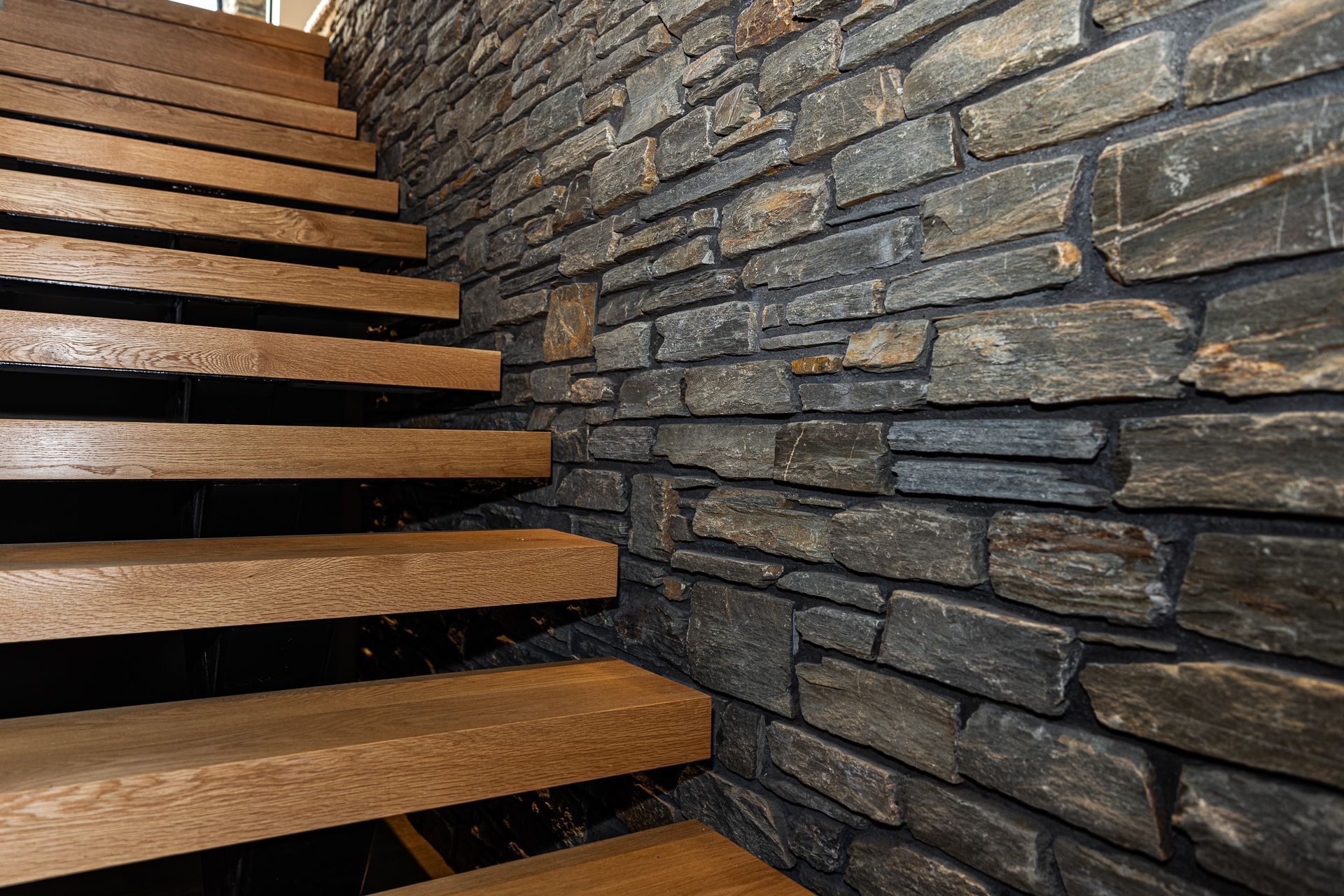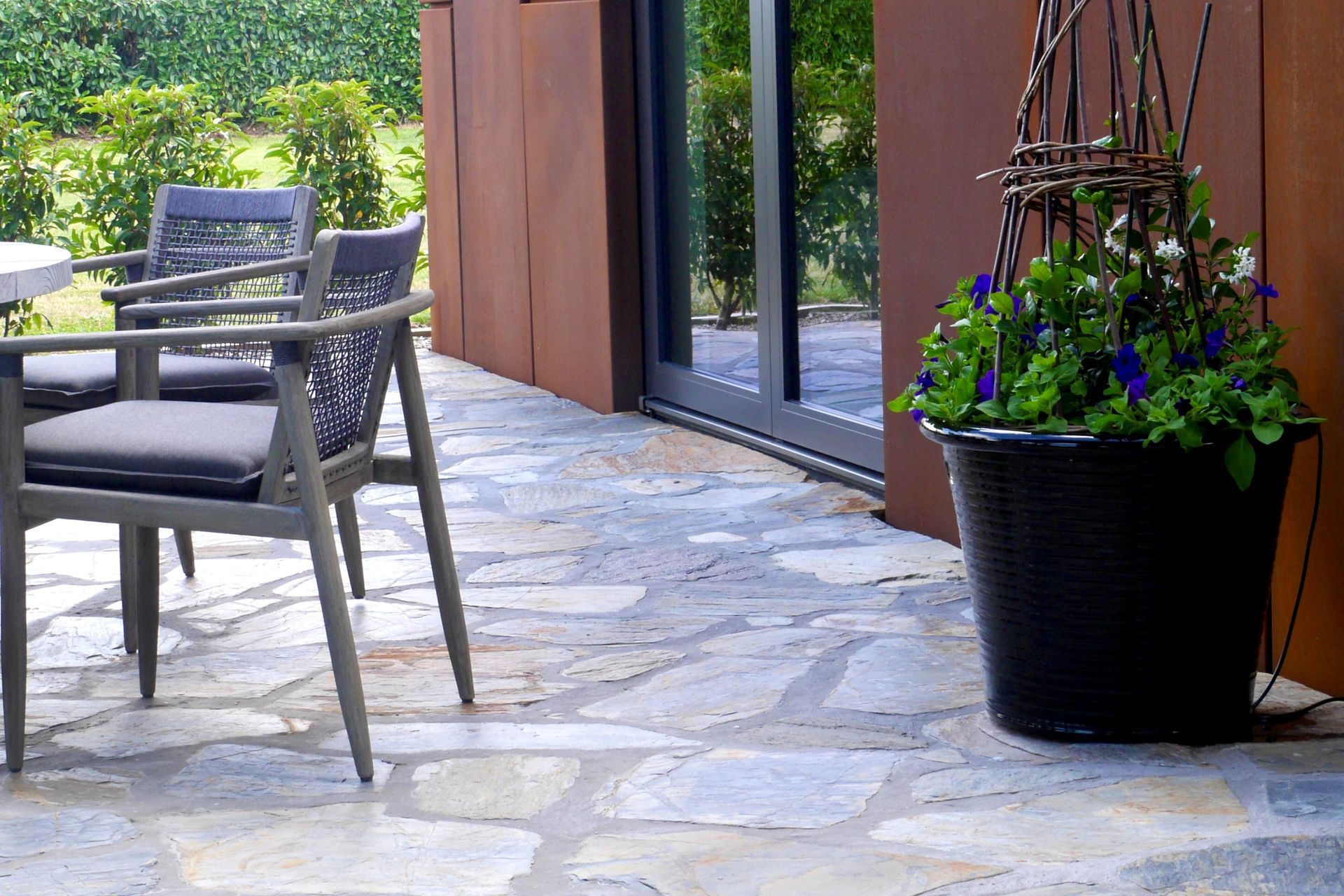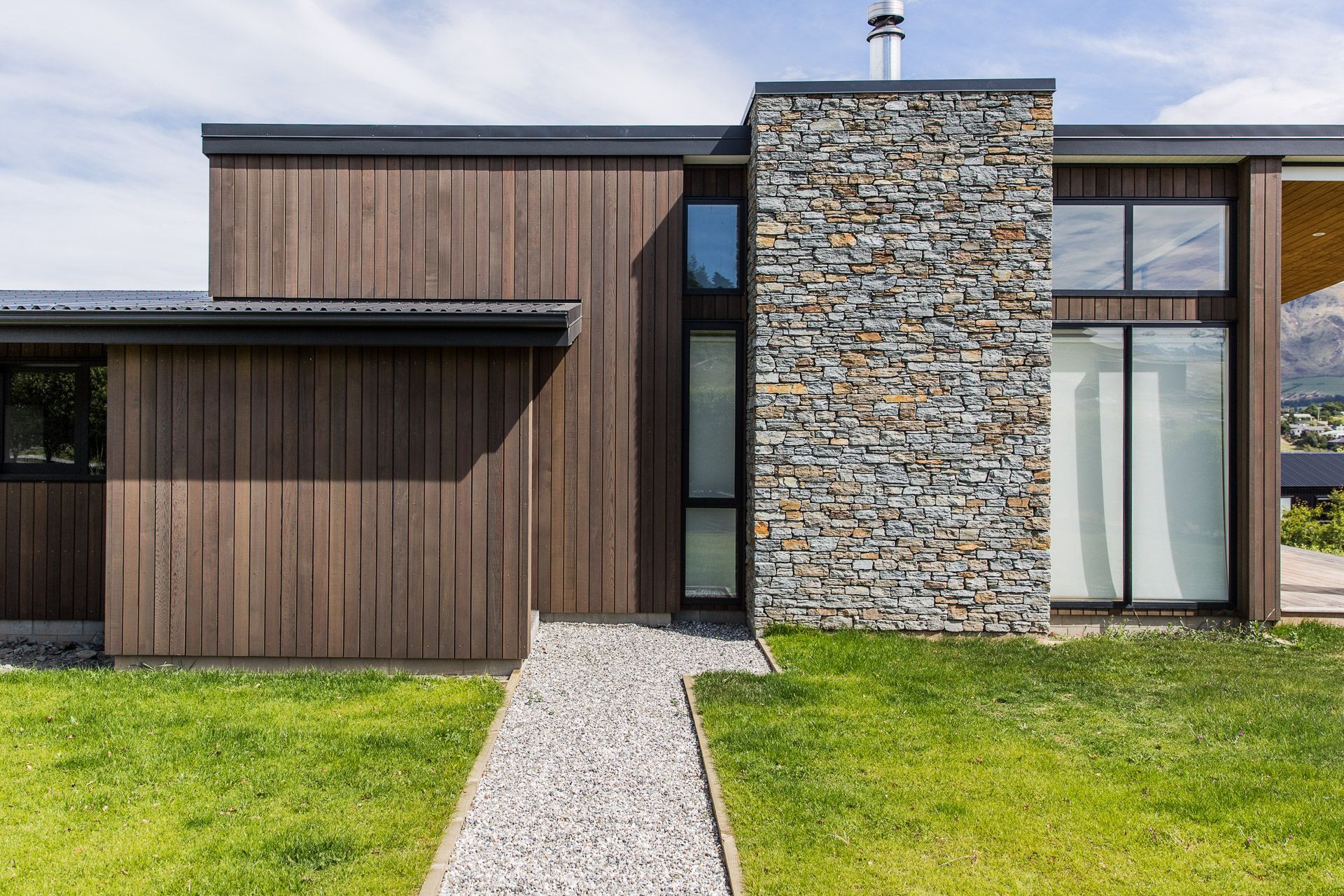Top Trends in Stone - Traditional Materials with Modern Design
Written by
06 September 2024
•
4 min read

Schist stone can transform a home with its distinctive texture and colour combinations. Whether used as a backdrop, feature wall or as part of a home's exterior, stone promises to enhance any space, especially when paired with materials such as timber, corten steel and concrete.
In this guide, Lucy Middendorf, owner of Wanaka Stone, explores the best ways to incorporate Central Otago schist into your home, offering tips on selecting the right size, colour and texture combinations. She also covers essential advice on maintenance to help ensure your product remains as beautiful as the day it was installed.
Invite nature into your home
These stairs lead from the front door to the main living upstairs and are a sleek contrast to the rustic stone wall they lead up. The linear shapes of the stone and stairs complement each other, while the textures contrast nicely. Stone in your home can be a way of adding a special feature or focal point that also grounds your living space and ties back to nature.
TIP: If you are going to use stone in your home then be sure to seal with a silicon-based sealant at the time of construction. Unlike traditional polyurethane options, silicon-based products result in no colour alteration to the stone, so it doesn’t look sealed. The sealant will stop the cement used from turning into fine dust and creating housework!

Emphasise colours you like
Cluden Stone is renowned for its rich colour variations and adaptability and is the perfect way to bring visual contrast into a space, especially when paired against the white mortar. “The colour contrast of Cluden Stone with white mortar is a great pairing, as the pop of contrasting colours in the stone brings the walls to life. White mortar and only grey stone can look monotoned.”
TIP: Highlight the colouring you love by matching next to the stone. Different lights and materials change the tones emphasised in the stone. The golds, blacks, grey, warm blues and occasional green tones can be accentuated by matching with these tones.

Embrace the Contrast of Stone & Steel
Combine contrasting textures by pairing smooth, cool concrete slabs with rugged hand-hewn schist, and setting sleek colour steel alpine trays against the rustic charm of natural stone. The textured surface of the schist interacts with the changing light, producing a fascinating play of shadows that enhances the visual appeal all day long. Corten steel, with its evolving patina and low-maintenance requirements, similar to stone, compliments the rough textures of stone beautifully, resulting in a truly effortless living experience.
TIP: The more your stonemason rakes out the mortar, creating a recess, the more shadow and contrast occurs producing changing visual appeal throughout the day. For less contrast, finish the mortar flush with the stone faces. Uplighting or downlighting schist features adds a dramatic touch.


Match Made in Heaven—Stone & Timber
There is no way to get it wrong when combining schist with timber. Variations with timber tones and various stains enhance the tones and depths of natural stone. Different stains and finishes of timber highlight the wide range of colours and tones in stone.
TIP: You can’t go wrong with timber of any description used alongside schist. Slabs of rough-sawn timber, beautifully sanded cedars, and timber stained with greys, blues and browns. All of these look great paired with stone.

The Impact of Stone Size in Your Design
We often get asked what size to specify schist stone on buildings. This refers to the foundation or footing space called for the stone. Solid stone needs a minimum of 150mm width as well as space for the backing board and cavity. Aesthetically, it is worth considering the scale of the project when deciding the size of the stone. Large walls require more big-faced stones to look proportionally pleasing. Narrow or small walls need a higher proportion of small stones to achieve the same aesthetic. It is particularly important to use bigger stones when the walls are larger in scale. Bigger individual stones to achieve a blockier finish contrasted to smaller stones that create a busier overall appearance.
TIP: Allowing wider footings for stone allows more substantial stones to be used, the team at Wanaka Stone have regularly split stone to 180mm for larger walls and have split stone to 250mm wide to allow for extra large pieces to be incorporated into designs.


Transform your home with the timeless beauty of Central Otago’s schist from Wanaka Stone. Let Lucy and her team guide you to the perfect stone design. Contact Wanaka Stone through ArchiPro today.